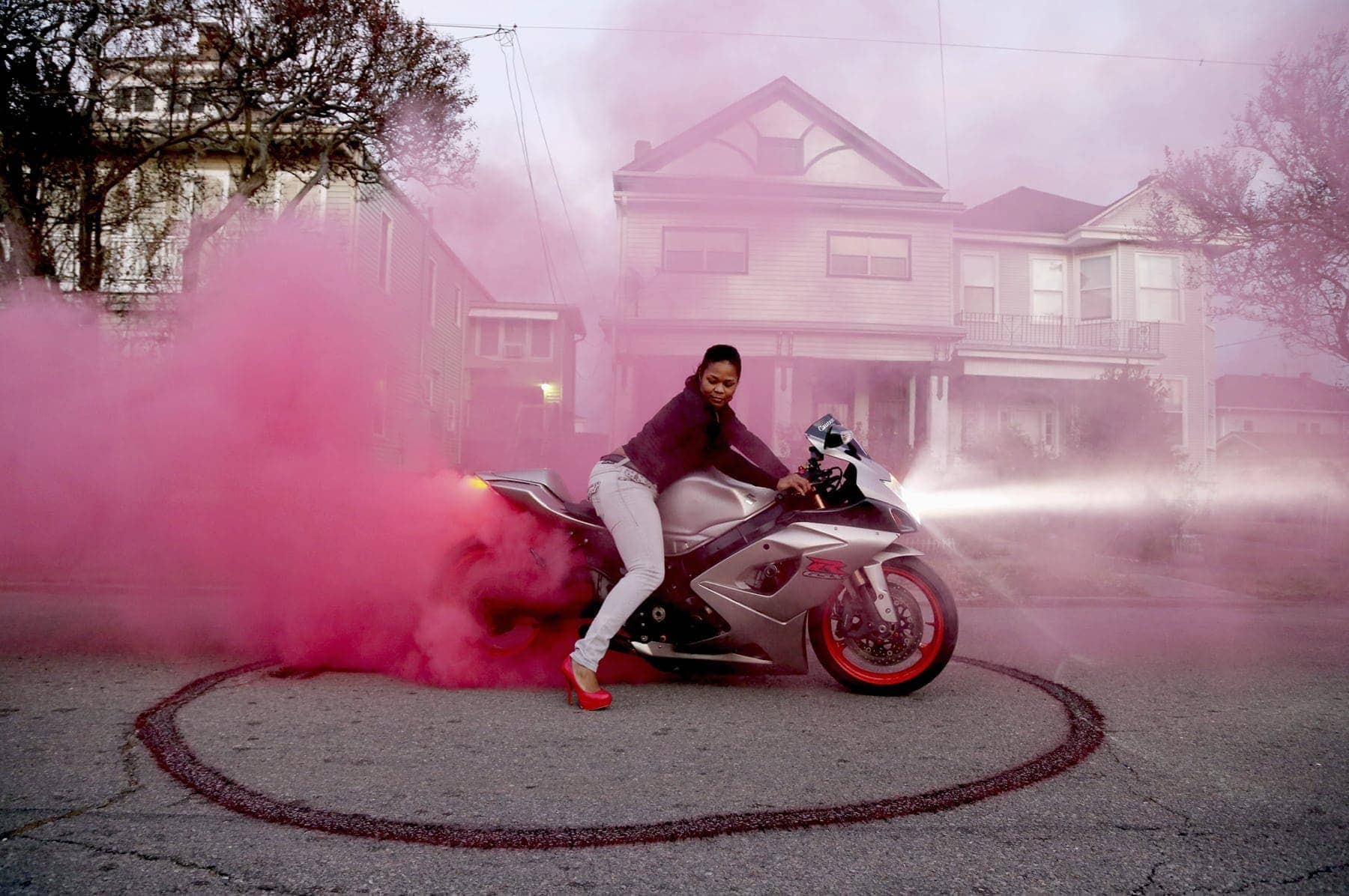
For nearly a decade, photographer Akasha Rabut has documented the thriving culture of New Orleans. In Death Magick Abundance – her first book – she attempts to push beyond the tourist facade of the city and experience the real New Orleans, via its people.
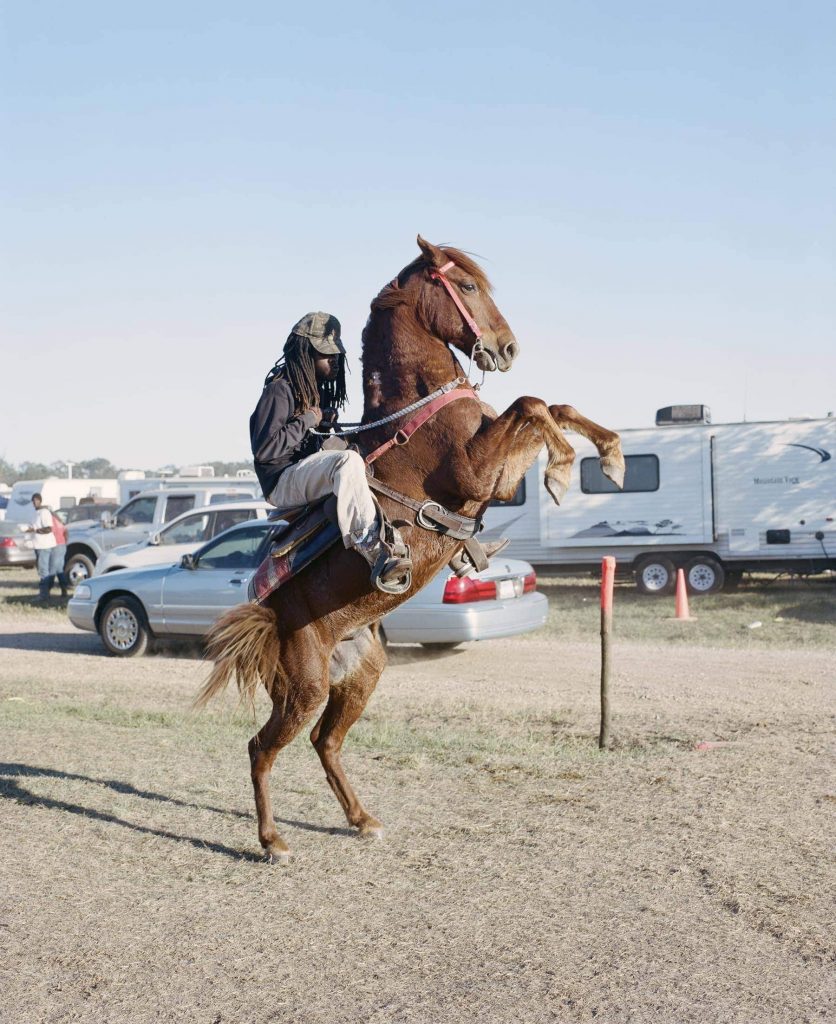
Trail Rider, 2014 © Akasha Rabut from ‘Death Magick Abundance’, published by Anthology Editions
The result is a series of powerful images that channel the infectious spirit of the place and its inhabitants, whose attitude towards death further increases their capacity for living. In these works, we can almost hear the roaring of motorcycle engines and feel the closeness of the Louisianan air, the electric vibrance of the streets.
As well as beauty, pride and joy, Akasha’s images capture the incredible resilience of the people that live in New Orleans; a resilience summed up in the foreword written by Sam Feather: “A declaration from the jaws of disaster… We’re still here, still twinkling like a jewel.”
We can almost hear the roaring of motorcycle engines and feel the closeness of the Louisianan air, the electric vibrance of the streets
Akasha, can you talk about your interests as a photographer and how this project came about?
This project came about organically after I moved to New Orleans, and fell in love with the city. I found myself really inspired by the post-Katrina culture and people’s resiliency and ability to continue celebrating their city and heritage. Even though Hurricane Katrina was naturally devastating, it was also weaponised and used as a mechanism to shut down the public system and dispose of public housing.
There wasn’t really any infrastructure; public schools were shut down and the public hospital got shut down, so really the people that I photographed are the ones that loved the city, came back and had the passion to rebuild. Because the infrastructure wasn’t there, it was the people who brought New Orleans back to life and that’s what has driven my photography for the past decade.
What compelled you to move there in the first place?
I’d never been to New Orleans but my friends had they loved it, so we all kind of talked about it and said we’d move there together, but nobody came. I was there by myself, not really sure if I was going to stay or not. Then I met somebody and fell in love with that person and he showed me this side of New Orleans that I’d never really experienced.
I met somebody and fell in love with that person and he showed me this side of New Orleans that I’d never really experienced
You’ve been working on this project for almost a decade. In what way would you say New Orleans has changed during that time?
I feel like there’s been a lot of superficial changes. It’s definitely ramped up on building hotels and gentrifying. There were no regulations with Airbnb, so a lot of people who didn’t live in New Orleans took advantage of that and bought out tons of housing, which seemed really unfair for people who already lived in New Orleans.
There’s a lot of designated land next to the river that was supposed to be for public housing. That land is above sea level, so that means when there’s a hurricane or flood, it won’t flood there and the Trump administration has been selling that land to hotels. So that’s definitely something I’ve seen: a lot of hotels and tourism growing. A lot of schools are being rebuilt which is good.
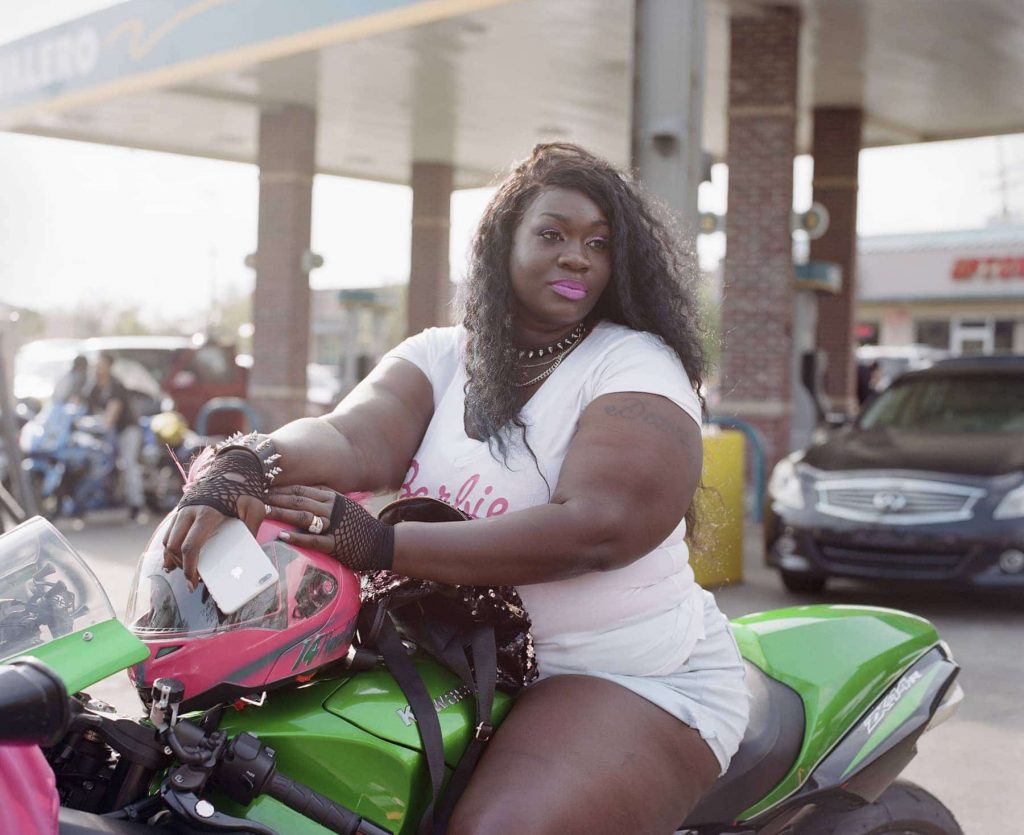
Karma, 2018 © Akasha Rabut from ‘Death Magick Abundance’, published by Anthology Editions
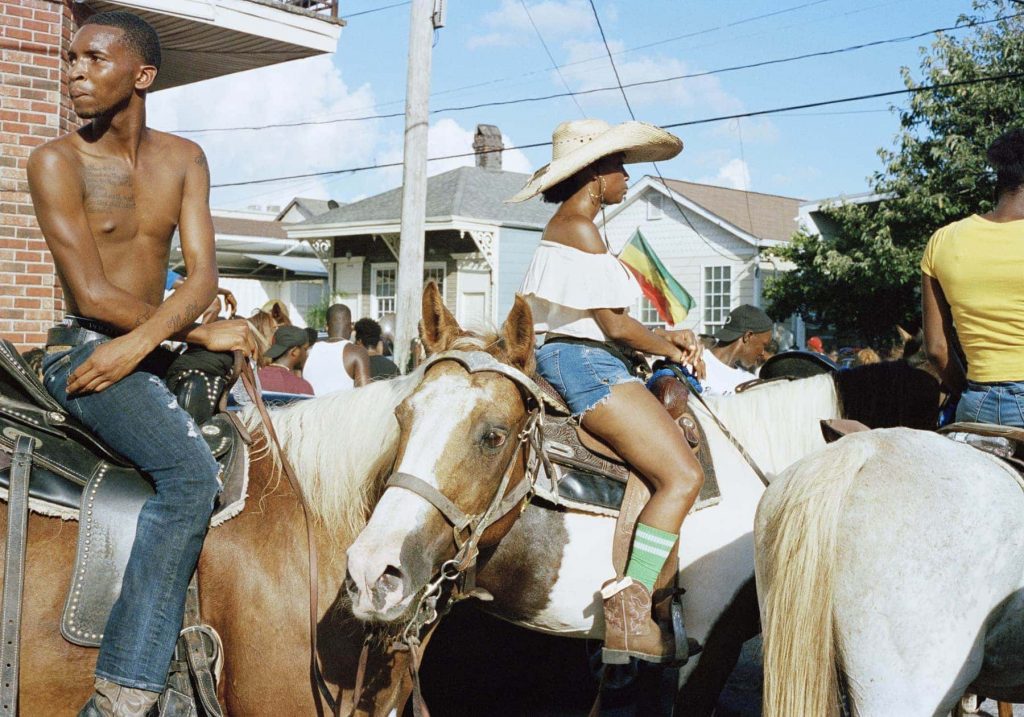
Central City, 2018 © Akasha Rabut from ‘Death Magick Abundance’, published by Anthology Editions
With Covid-19, the same thing that happened with Katrina is happening now. You have multi-generational families living in a single household and that’s why Covid-19 is so bad there, because you have all these people stacked in one little unit, and tons of people are on waiting-lists to get housing but there really isn’t any public housing available, because instead of building public housing, they’re building hotels.
How is the community coping with the social distancing measures?
I’m in California at the moment, but I think the social distancing is hard, especially because it is such a social place. Every Sunday we have a parade and, like I said, there are multi-generational families living in single households, so I don’t really know but I think it’s really hard. I remember at the beginning of social distancing, I heard someone saying that and I thought, I have to do it, but really implementing it is hard in a place where socialising is such a big part of the culture.
New Orleans, sadly, is used to dealing with a lot of natural disasters – I do think New Orlean’s people will build, rebuild and rise up from the ashes
Exactly. When I think of New Orleans, I think of parades and parties…
Yeah, it’s a parade culture and it’s really a culture that celebrates life and death. Nobody can do funerals right now and funerals are such a big part of life there, so that’s another thing I think will be really hard for people.
But do you think that because of the recovery after Hurricane Katrina, people will possibly bounce back quicker?
Yeah, the people there are resilient and I think that because they’re such a magnificent energy for life, friendship and community, and also New Orleans, sadly, is used to dealing with a lot of natural disasters, I do think New Orlean’s people will build, rebuild and rise up from the ashes.
And hopefully the government learns from this and sees that they need to change the minimum wage, and that they need to give housing to the people who actually live there.
What’s nourished by our government in New Orleans is tourism. That’s what drives the economy. Really, the only way we can sustain the culture that’s shown in my book and the culture of New Orleans is if we nourish that by providing public housing and a liveable wage.
My work is the way it is because of my personality: my curiosity for knowing who people are and my appreciation for friendships and relationships
In the book, you spent time with the Caramel Curves – the first female black motorcycle club – and the Southern Ryderz urban cowboys. Do you think photography has brought you closer to the community and would you have met these people otherwise?
I probably would’ve met them because I’m a really curious person, but I think the camera was an icebreaker for me. I’m very curious, but I’m also pretty shy. Social situations are always really hard for me, but having a camera around is helpful. I do think that photography opens up a door when you ask somebody to take their photo and a conversation can build from that.
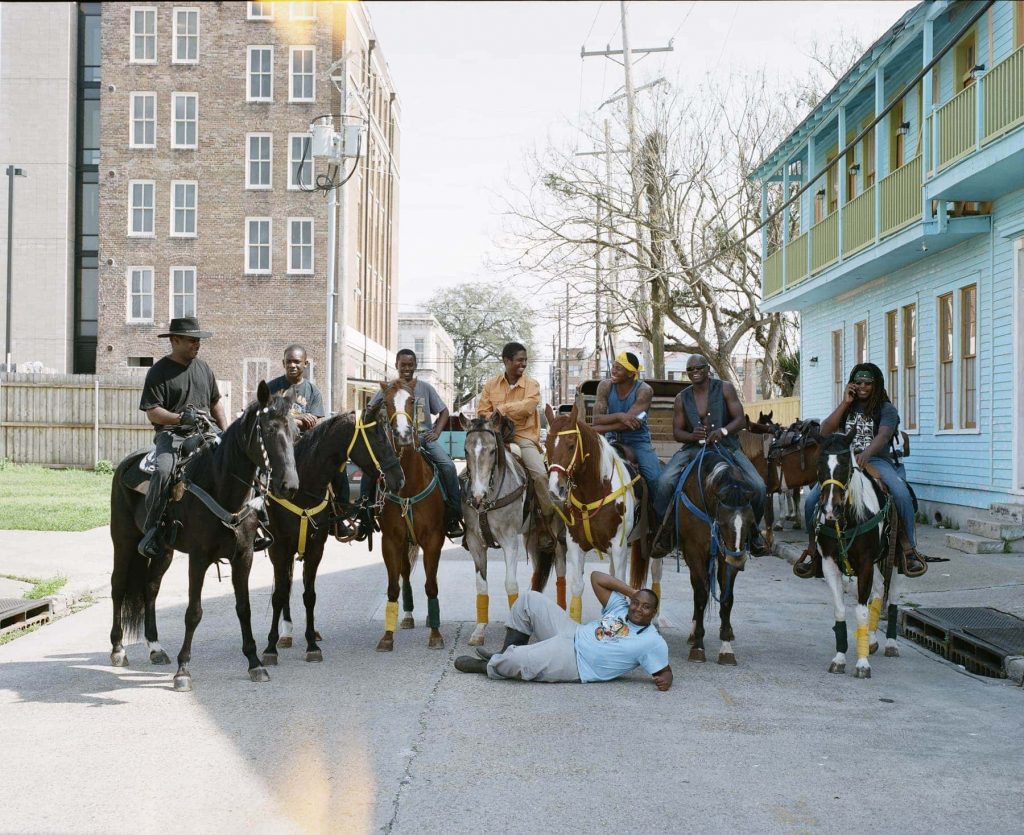
Central City, 2014 © Akasha Rabut from ‘Death Magick Abundance’, published by Anthology Editions
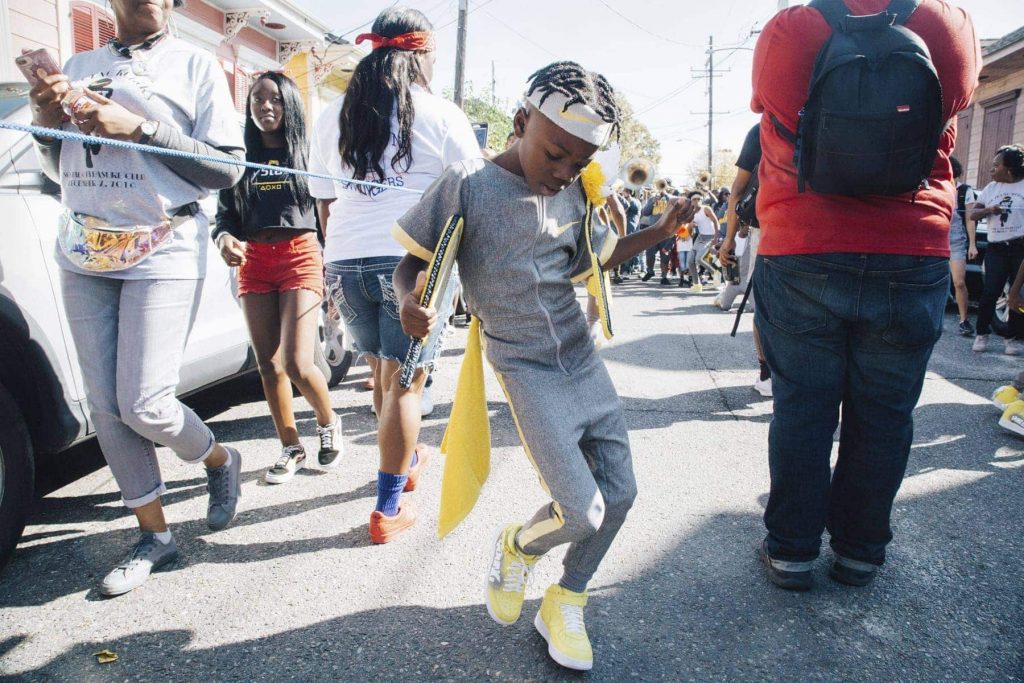
The Young Rollers Social Aid and Pleasure Club, 2019 © Akasha Rabut from ‘Death Magick Abundance’, published by Anthology Editions
However, I also feel like I can’t have one without the other. The camera is helpful, but I think my work is the way it is because of my personality: my curiosity for knowing who people are and my appreciation for friendships and relationships, so I feel it all goes hand-in-hand.
Lastly, is there a picture in the project that is particularly memorable to you, or an encounter that you had?
There are a lot of pictures that are really memorable for me. I don’t know if this is counter-productive, but I had to cut a big section of my book. There was a section about Edna Karr high school marching band and I documented the marching band and flag team, majorettes, color guard and dance team for five years.
Despite my attachment to the images, no one will ever rob me of that experience – it was like my first taste of the magic of New Orleans
I met a high school director in 2014 and he invited me to photograph the group, and through him I met the entirety of the marching band, dance team, flag ream and color guard. I followed them during the Mardi Gras season and walked with them for four miles. So you have these teenagers, who every other night they’re walking with their instruments.
Usually it’s either really cold or really hot; during Mardi Gras there’s no in-between. They’re walking four miles, so they get together around 3pm, the parade starts around 6pm and they’re done marching around 1am in the morning. It’s a really fantastic way to experience the city.
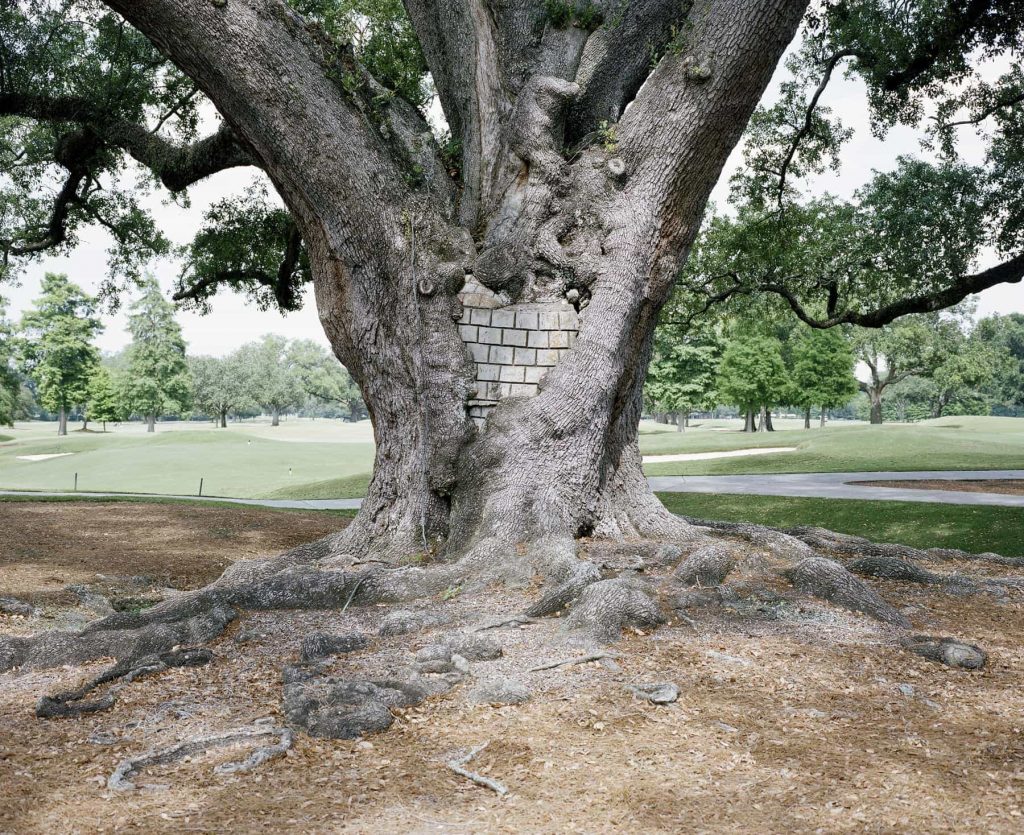
New Orleans Country Club, 2012 © Akasha Rabut from ‘Death Magick Abundance’ published by Anthology Editions

Cover of ‘Death Magick Abundance’ by Akasha Rabut, published by Anthology Editions
I’d follow them around during the parade season and I’d also go to their school and document them in the off-season. It was such a special and valuable experience for my book and my practice because I got behind-the-scenes access to these local celebrities, but unfortunately this section got pulled from my book.
And despite my attachment to the images, no one will ever rob me of that experience – it was like my first taste of the magic of New Orleans.
The photobook Death Magick Abundance can be purchased via anthologyeditions.com.




